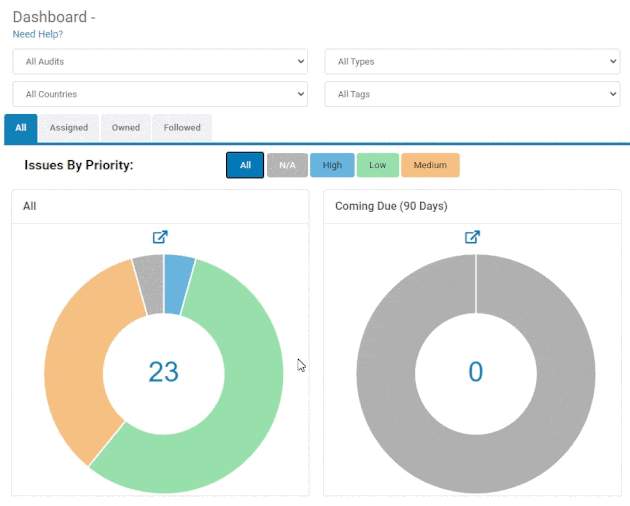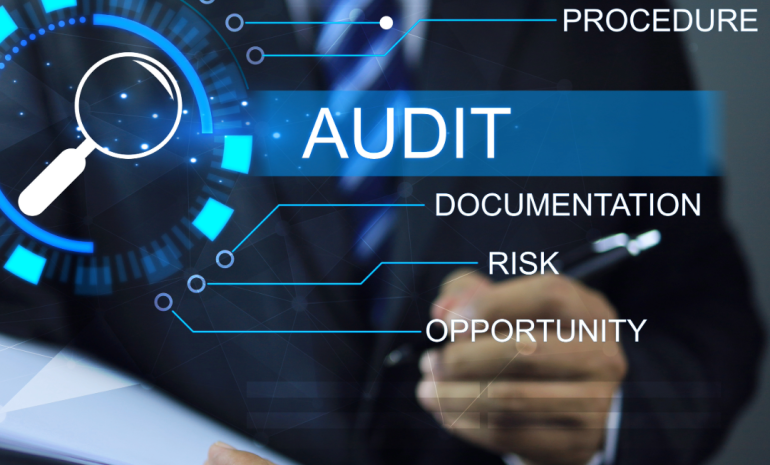Today’s business operations landscape demands fast-paced problem-solving and issue resolution. Regulatory compliance and operational excellence are vital to an organization’s success and effective audit management can unlock true potential.
The catch? Audits, while essential, can often become a daunting task, involving complex processes, meticulous documentation requiring multiple departments or individuals to create files, and prompt issue resolution.
The good news? Technology has evolved to provide innovative solutions not only simplifying the audit process but also enhancing its overall effectiveness.
Let’s take a look at the crucial components of an effective audit and explore the benefits of utilizing audit management software for quick, rapid, efficient issue resolution.
Understanding the Components of an Effective Audit
An effective audit goes beyond just ticking boxes and satisfying regulatory requirements. It involves a systematic approach with accuracy and process improvement at its core. If you want to implement an effective audit process, these are some of the mainstays to include in your workflows:
Thorough Planning: A successful audit starts with a solid plan. Identifying the scope, objectives, and stakeholders will allow the audit to take shape. It’s essential to define clear audit criteria and standards to evaluate performance. Think of it as the best time to determine acceptance criteria and lay the groundwork for everything to come.
Data Collection and Analysis: Gathering relevant data is at the heart of any audit. Whether it’s financial records, operational processes (standard operating procedures (SOPs)), or compliance documents, collecting accurate and comprehensive data is crucial for making informed assessments and determining best practices.
Issue Identification: Audits can reveal discrepancies, non-compliance issues, or areas for improvement. Identifying these issues promptly is essential to initiate the resolution process. Identify your problems in order to determine the best course of action to resolve them.
Issue Resolution: Timely and effective audit issue resolution prevents future potential risks and ensures any necessary compliance is being met. Addressing identified problems and implementing corrective actions are vital steps to continuous improvement.
Documentation: Thorough documentation of audit findings, actions taken, and outcomes is essential for accountability, reporting, and future reference during future audits where new technologies and novel advancements may be available to implement continued improvement.
Reporting: Clear and comprehensive reporting provides stakeholders insight into audit outcomes, actions taken, and areas for improvement. Well-structured reports facilitate informed decision-making and paint a more accurate picture of the process.
The Role of Audit Management Software
To streamline the aforementioned audit components and enhance the efficiency of audit processes, audit management software has emerged as an invaluable tool for auditors. Here’s how audit management software can revolutionize the way audits are managed and resolved:
Centralized Document Storage: Audit management software offers a secure, centralized repository for storing all relevant audit-related documents. This eliminates the hassle of searching through multiple folders or systems for critical information and compiles a single source of reference for all stakeholders.
Efficient Issue Resolution: One of the most significant advantages of audit management software is the ability to facilitate prompt issue resolution. With a centralized platform, teams can collaborate in real-time to identify issues, assign tasks, and track progress until an audit issue is resolved.
Clean Dashboards: User-friendly dashboards provide a clear overview of ongoing audits, their status, and pending actions. Filtering and sorting functions allow stakeholders to determine their next priority and set notifications for deadlines to keep things running smoothly. This visual representation enhances transparency and accountability among team members.
Robust Reporting: Audit management software allows users to generate detailed reports effortlessly. These reports provide a comprehensive overview of audit findings, actions taken, and improvements made. Custom reporting tools offered by programs like AuditFindings also allow for tailored needs and can be utilized to create executive reports in just a few clicks. This is invaluable for decision-makers and compliance regulators to quickly spot any necessary actions.
Data Analytics: Some advanced audit management software solutions offer data analytics capabilities. By analyzing audit data over time, organizations can identify patterns, trends, and recurring issues, leading to more proactive problem-solving and streamlined resolution workflows.
The Bottom Line
An effective audit involves careful planning, thorough data analysis, and prompt issue resolution. With audit management software, organizations can streamline these processes, leading to enhanced efficiency and overall resolution effectiveness.
Centralized document storage, clean dashboards, and robust reporting options offered by these tools not only simplify the audit process but also contribute to informed decision-making and continuous improvement by auditors and stakeholders. Embracing technology in audit management is no longer an option—it’s a strategic necessity for modern businesses seeking to stay not only compliant but also competitive in today’s fast-paced, dynamic digital environment.


